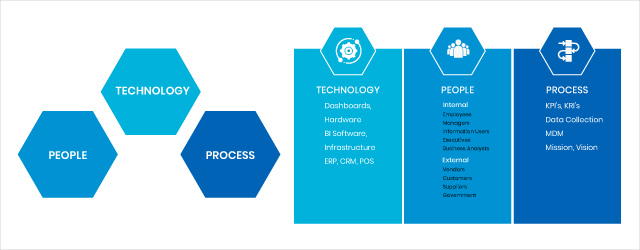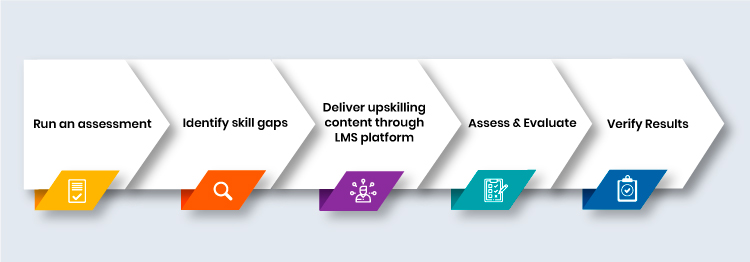‘Change is the only constant in life’ – Heraclitus, a Greek philosopher.
History is rife with examples of forward-thinking players who failed to capitalize on their innovations. Xerox Corporation is one such example. The first to invent the PC, and then unable to draw management support on going digital, resulted in a lost opportunity for Xerox.
And this was back in the day, when things were simpler. It all seemed easier then – create a product that delivers real value to your end users, work on acquiring customers and increasing your customer base, and drive sales. This was enough to keep the business running.
The dawn of the internet and introduction of tech has resulted in a well-informed, ‘spoilt for choice’ customer leaving organizations no longer able to afford to have a myopic view of their business. They need to expect and prepare for change and innovate. Or they risk falling behind, much like how Xerox lost out to the now category leaders – Microsoft, Apple and Dell.
The Way Forward – How can Businesses Ensure Success
In today’s rapidly evolving technological environment, businesses are not just competing against the known competition, but also unknowns that are perhaps not even introduced into the market yet. And there’s also the threat of black swan events, that seemed to be rare before, but now seem to hit us once every few years.
Being a forward-thinking visionary as an entrepreneur may make you aware of the dangers of failing to innovate before others. You may invest in digital transformation (DX) to help your business challenge the status quo and stay ahead of the competition.
And, how do you ensure this success?
Digital Transformation in the road to Innovation
Digital transformation at the organisational level requires a reevaluation of people, process and technology.

fig: The Pillars of Transformation
While processes and technology can be tuned relatively easily (in some cases) to match the current digital needs of an organization, the people aspect requires more work. Businesses need to rethink their digital transformation goals and assess whether their current talent pool is well equipped to meet these needs.
According to a McKinsey Global Institute report, “around 375 million workers (close to 14% of the global workforce) may need to switch occupational categories as digitization, automation, and advances in artificial intelligence take over their fields”.
With an increasing demand for new-age skills and a scarce talent pool, organizations are focused on upskilling and reskilling initiatives to bring employees at par with the requirements of the future.
While organizations are focused on upping the ante and productivity at work, this focus should not deter their upskill goals. The solution…Upskill from Home, of course! Still not convinced about how to Upskill from home?
The case for Upskilling from home
Benefits of online over the offline upskilling program
- Avoid Logistical challenges and overheads
Employers will need to reserve training/conference rooms for in-office training. Should the number of employees be large – a department or an entire business unit, T&D/ L&D teams will be left searching for reserving corporate spaces for training and along with it, arranging all the required supplements right from desktops, tablets, or training material, refreshments, and transportation. And, then comes the challenge of matching schedules of all participants. With each of these, there is an additional cost factor that gets added to this upskilling and re-skilling budget. All these challenges are easily addressed by empowering employees to take on upskilling from their homes as per their convenience, giving them an added flexibility.
Remember not all employees learn at the same pace so restricting them to a group learning environment and expecting results may not deliver the end objective.
- Ease of accessibility
As the term suggests, with an online mode, you can upskill employees from the comfort of their homes. It then becomes the employee's prerogative to seek the training either from their office, home, or even a café! With training no longer restricted to one geographic unit, employees from numerous locations can access training content as per their convenience irrespective of their location.
Improved results
Training conducted by lecturers in person leaves little room for monitoring individual performance. While in-person tests and interactions attempt to ensure the training is as expected in many instances it is difficult to gauge the actual knowledge transfer. The online upskilling program ensures employees are learning and improving at their own pace. Basis their learning, further training or reskilling can then be provided, making the entire upskilling and re-skilling exercise much more fruitful and effective for the organization.
Which leaves the question, how do you go about upskilling from home?
Your Upskilling Partner – Learning Management Systems
Learning management systems while administering, tracking, and reporting the delivery of upskilling content are being complemented by learning experience platforms that manage MOOCs, micro-learning, VR learning, and content.
Popular LMS portals offer varied freemium and paid options with exclusive corporate offerings. Some popular LMS platforms include Coursera, LinkedIn Learning, edX, Udemy, Udacity, Codecademy etc with many more options available in the market and more players being added to the list each day.
Measuring Effectiveness

In order to increase the effectiveness of an upskilling program, the first step is to ensure the correct skills training is being imparted for which a skills need identification is crucial. This will help you understand what are your department’s existing skill proficiency and what are the expected outcomes from the upskilling initiatives?
Once you have identified where your current workforce stands, you can then work with your LMS partner to design suitable courses for the upskilling program to meet those goals.
Remember to test and evaluate progress at every step of the way, to take suitable corrective actions and suggest recommendations so training is as expected.
Goes without saying, you have to have the foresight into the emerging skills that will impact your business and incorporate those into your learning modules. While assessments will help ascertain the immediate learnings from the module, L&D teams should also monitor on-the-job performance in the new roles, use simulations, feedback and achievement of set performance goals to ensure the upskilling is a success.
Conclusion
Perhaps it may be the numerous benefits listed earlier or it could be an unexpected natural disaster; it may be something else tomorrow that drives your organization to opt for upskilling from home. Investing in your employees career growth not only adds to your organization’s productivity and bottom line empowering it to take on the future, but also provides you an upskilled and loyal workforce! When you invest in your team, you will clearly begin to see the ROI and the resulting profitability for your business.


